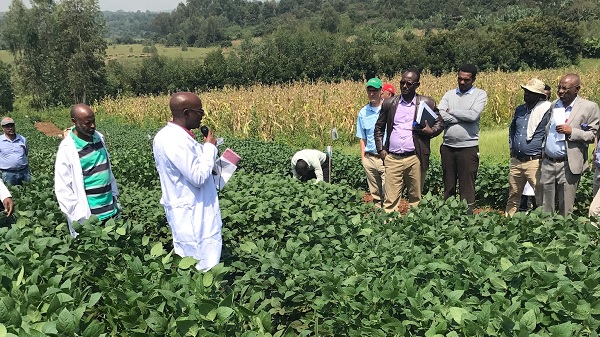
Soybean production in Ethiopia has more than tripled in seven year, from 35,000 metric tons in 2011/12 market year to around 120,000 metric tons in 2018/19 market year
BEIJING (Reuters/USDA)–China will start allowing soybean imports from Ethiopia, customs authorities said on Friday (7 September 2018), as the world’s top importer seeks to reduce its reliance on supplies of the oilseed from the United States amid a trade row with Washington.
The move would diversify soybean imports origins for China, and help meet domestic demand, the General Administration of Customs said in a statement on its website.
It follows this week’s China-Africa cooperation forum in Beijing (FOCAC), to which every African nation sent representatives, except for eSwatini.
Beijing is seeking more sources for soybean imports and finding alternative protein sources for animal feed after hitting U.S. beans with an additional 25-percent tariff in July as the world’s top two economies remain locked in a trade war.
Ethiopia, the world’s 6th largest coffee grower and the largest in Africa, is better known for its exports of high-quality arabica beans which are used in espressos and lattes for a smoother flavor.
Soybeans are processed to make meal for animal feed and oil for cooking.
The details of the new deal were unclear. The east African nation has been sending beans to China in increasing quantities over the past year.
It accounted for a tiny portion of the Asian nation’s total annual imports of about 95 million tonnes last year.
But in the first three months of 2018, imports were 13,508 tonnes, almost matching the 14,939 tonnes the African country brought in for the whole of 2017. [SOY/CN]
The government stopped publishing data showing origins and destinations of commodity imports and exports in April.
Soybean production in Ethiopia
Ethiopia’s oilseed sector plays an important role in generating foreign exchange earnings for the
country. According to the U.S. Department of Agriculture (USA) report, in MY16/17 (Oct-Sep market year), exports of major oilseeds– sesame, Nyger seed, and soybeans – generated nearly $360 million in export earnings. In addition, the oilseed sector provides income to millions of growers and others market actors along the value chain.
According to the USDA report, in MY18/19 soybean production in Ethiopia is estimated to be around 120,000 metric tons, up 5,000 metric tons in response to growing local demand for cooking oil, soy-based foods, and livestock feed. Future production is expected to continue its upward climb to respond to rising consumer demand.
Soybean production has more than tripled from 35,000 metric tons in MY11/12. Most of this growth in production was due to an increase in the area planted, especially from commercial farms which are few in number. About half of total soybean production is said to come from these bigger commercial operations, some of which are rotating or inter-planting soybeans with other crops. Improved yields also contributed to production increases.
Soybeans contribute nearly 10 percent to the country’s total oilseed production and account for only 4 percent of area planted to oilseeds. The main soybean-producing areas are in the western part of the country in the Oromia and Benishangul Gumuz, and to a lesser extent the Amhara region.
Sources: Reuters & USDA’s FAS
